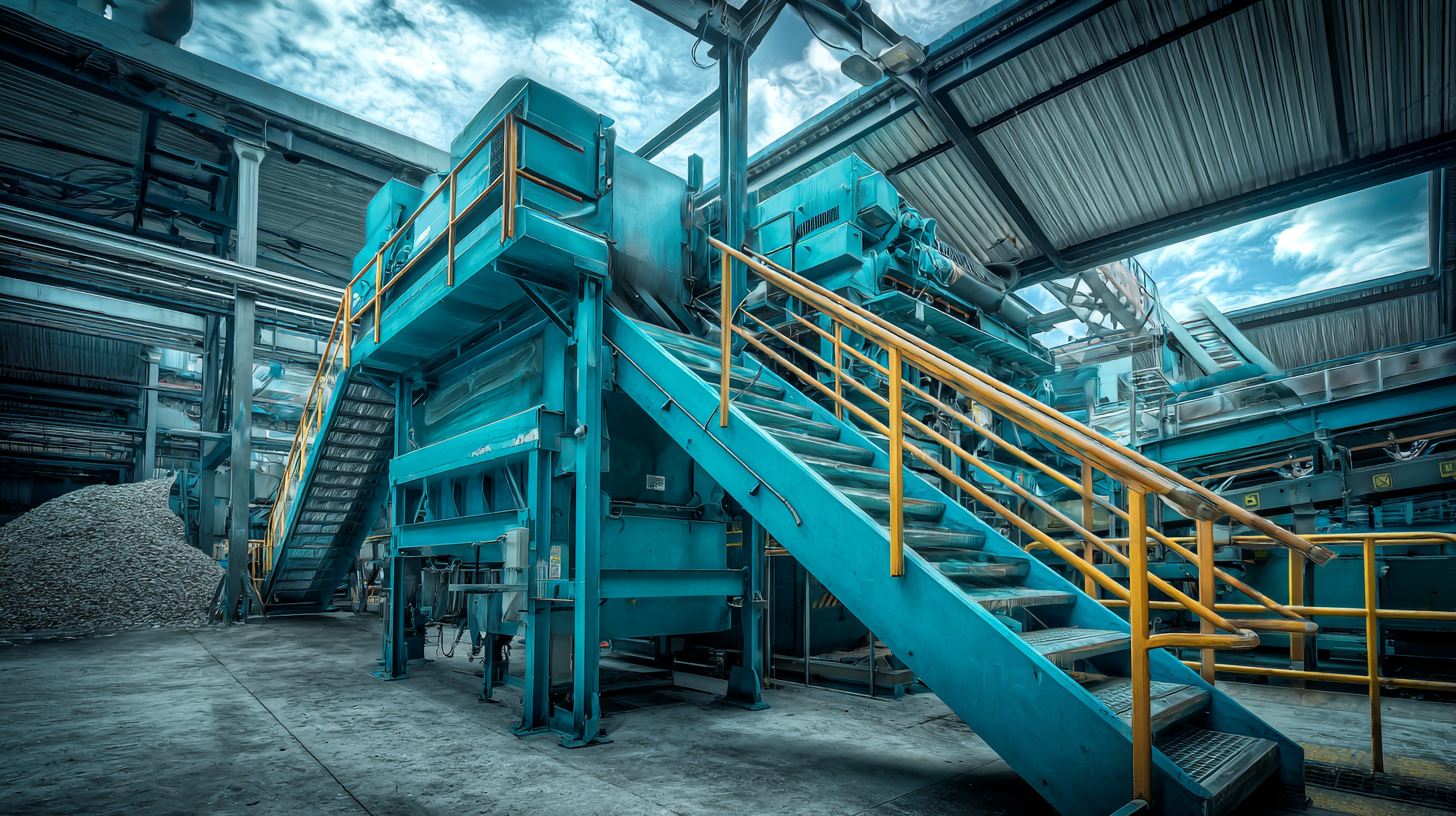In the rapidly evolving landscape of manufacturing and logistics, sorting machines have become indispensable tools for enhancing efficiency and accuracy. According to a recent report by Technavio, the global sorting machine market is expected to grow by over 8% annually, reaching a valuation of approximately $5 billion by 2025. This growth is driven by the increasing demand for automation in warehousing and distribution, particularly in e-commerce and retail sectors. As companies aim to optimize their operations and improve customer satisfaction, choosing the right sorting machine tailored to their specific needs becomes crucial. With China positioning itself as a leader in high-quality manufacturing, businesses around the world are looking to partner with local suppliers to harness cutting-edge technology in sorting solutions. In this blog, we will explore the future of sorting machines in 2025 and provide guidance on how to select the ideal sorting machine for your business needs.

As we look towards 2025, the sorting machine technology landscape is set for transformative advancements driven by automation and artificial intelligence. According to a recent report by MarketsandMarkets, the global sorting equipment market is projected to reach USD 6.4 billion by 2025, growing at a CAGR of 8.4%. This surge is spurred by the increasing demand for streamlined operations across various industries, including logistics, food processing, and recycling.
Key trends to watch include the rise of AI-powered sorting algorithms that enhance accuracy and efficiency. With machine learning capabilities, these systems can adapt and optimize sorting criteria in real-time, significantly reducing error rates. Furthermore, the integration of IoT technology allows for predictive maintenance, ensuring minimal downtime and prolonging equipment lifespan. As businesses look to future-proof their operations, investing in smart sorting solutions will be crucial for maintaining competitive advantage in a rapidly evolving market.
In 2025, the landscape of sorting machines is set to evolve significantly, driven by technological advancements and the increasing need for efficiency in various industries. When evaluating sorting machines, businesses should prioritize several key features that can optimize performance and enhance operational productivity. According to a report by the International Society of Automation, the integration of Artificial Intelligence (AI) in sorting systems can reduce error rates by up to 30%, delivering higher accuracy in sorting operations.
One crucial feature to look for is real-time data analytics capabilities. Machines equipped with advanced sensors and data processing software can monitor performance metrics continuously, allowing for timely adjustments that maintain sorting speed and accuracy. As per a recent study by McKinsey, organizations that leverage data-driven decision-making have reported up to 25% increased efficiency in their operations.
Tips: When selecting a sorting machine, consider models with adaptive learning algorithms that improve over time based on previous sorting patterns. Additionally, ensure the machine has robust maintenance features, as preventive upkeep can significantly lower downtime—research indicates that unplanned downtime can cost companies upwards of $1 million annually.
When evaluating sorting machines for your business, it’s essential to understand the different types available and their respective strengths. Conveyor belt sorting machines are among the most common and effective options, particularly for bulk handling operations. These machines utilize a series of belts and advanced sensors to accurately sort a variety of items based on size, weight, or other characteristics, making them ideal for industries like food processing and logistics.
On the other hand, optical sorting machines employ high-resolution cameras and sophisticated algorithms to identify and separate items based on color, shape, and defects. This technology is particularly beneficial in the agricultural sector, where sorting fruits and vegetables can significantly enhance quality control. Additionally, robotic sorting systems are becoming increasingly popular, offering flexibility and efficiency in handling diverse products. By analyzing the specific needs of your operations, you can choose a sorting machine that not only streamlines your processes but also adapts to future demands in 2025 and beyond.
| Type of Sorting Machine | Speed (items per minute) | Accuracy (%) | Cost ($) | Ideal Use Case | Future Trend |
|---|---|---|---|---|---|
| Automated Conveyor Sorting | 150 | 98 | 25,000 | Large warehouses and distribution centers | Integration with AI for predictive sorting |
| Optical Sorting Machine | 100 | 99 | 30,000 | Food processing and recycling | Enhanced image processing capabilities |
| Vibration Sorting Machine | 200 | 95 | 15,000 | Small to mid-sized operations | Increased energy efficiency |
| Robotic Sorting System | 80 | 97 | 50,000 | Complex sorting tasks and mixed goods | Advancements in machine learning |
| Air Jet Sorting System | 250 | 96 | 40,000 | Textiles and lightweight items | Integration with IoT for remote monitoring |
When selecting sorting machines for different industries in 2025, various factors play a crucial role in making the right choice. The industry type significantly influences the required features, such as the size of the products being sorted or the materials involved. For instance, food processing facilities may prioritize machines that adhere to strict hygiene standards, while logistics centers might focus on speed and efficiency. Understanding the specific needs of your sector will help streamline your selection process.

Tips for choosing the right sorting machine:
By keeping these factors in mind, businesses can make informed decisions that will lead to improved sorting operations tailored to their unique needs.
Investing in sorting machines is a significant decision for businesses looking to streamline operations and enhance productivity. As projected by a recent market research report, the global sorting machines market is expected to reach $4.3 billion by 2025, growing at a compound annual growth rate (CAGR) of 7.5%. This growth underscores the importance of choosing a sorting machine that not only meets immediate operational needs but also supports long-term efficiency. The balance between cost and long-term benefits is critical; while cheaper machines may reduce initial expenditure, they often incur higher maintenance costs and operational inefficiencies over time.

Tip: When evaluating sorting machines, consider the total cost of ownership (TCO), which includes purchase price, maintenance expenses, and energy consumption. A higher upfront investment may lead to significant savings in the long run through improved efficiency and reduced downtime.
Additionally, it’s essential to assess the machine's adaptability to future technologies. With advancements in AI and machine learning, modern sorting machines can significantly enhance sorting accuracy and speed. Investing in machines that offer upgradable features ensures that your business remains competitive as technology evolves.
Tip: Look for sorting machines that are compatible with industry standards and can integrate with existing systems to minimize disruption and maximize productivity right from the start.
